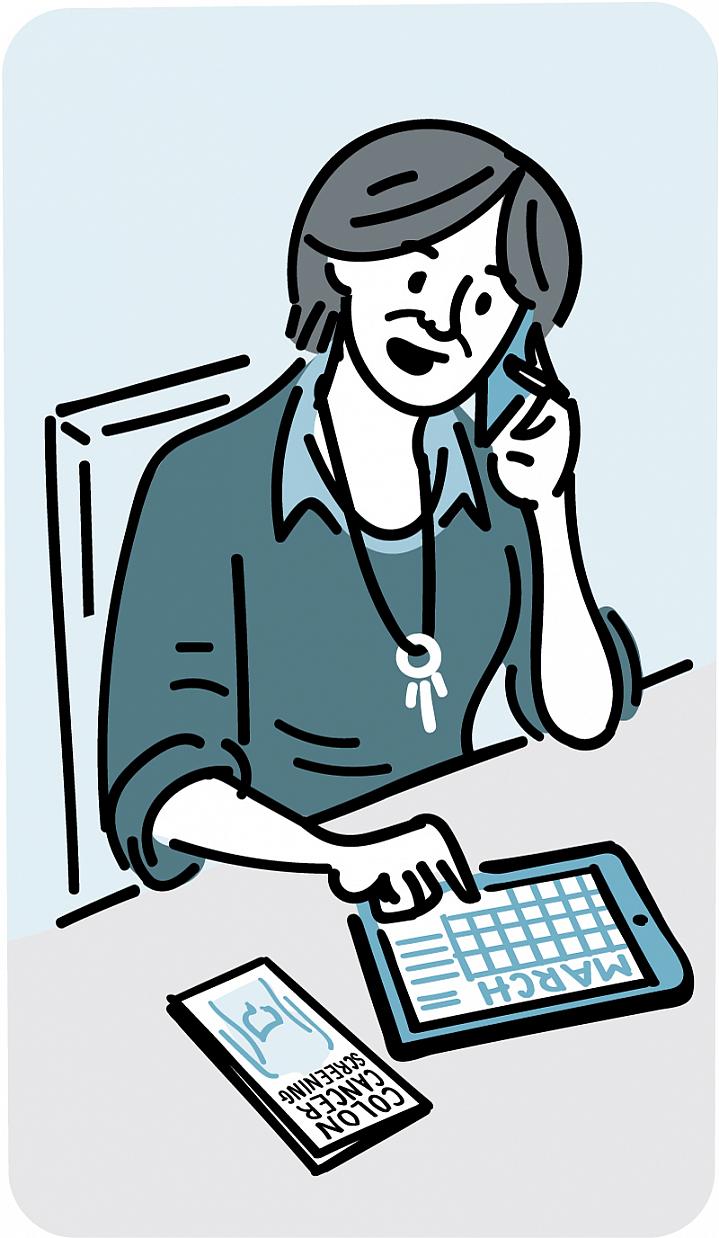Better Check Your Bowels
Screening for Colon and Rectal Cancer

Colorectal cancer is the second-leading cause of cancer death nationwide. But it can usually be cured when caught early. Screening tests like colonoscopy can save lives by catching problems before symptoms even appear, when treatments might work best.
So no matter how busy you feel, if you’re age 50 or older—or even younger if you’re at high risk—you should make time to talk with your doctor about getting screened for colorectal cancer.
“Screening is effective, and it’s been shown through clinical studies to reduce deaths,” says Dr. Carrie Klabunde, an NIH expert in cancer screening and prevention.
But although screening is known to save lives, many Americans ages 50 and older don’t get screened for colorectal cancer. The most common reason, says Klabunde, is that “people don’t realize this screening is something they need to do.” Other common reasons include costs and inconvenience, such as taking time off from work.
Colorectal cancer is cancer of the colon or rectum, both of which are part of the large intestine. Scientists don’t yet know what causes colorectal cancer, but certain factors affect your risk. Smoking, excess weight, or having 3 or more alcoholic drinks per day raises your risk.
“The risk for colorectal cancer rises with age,” Klabunde adds. Your risk also doubles if you have a close relative who had colorectal cancer.
The 3 recommended tests for colorectal cancer are colonoscopy, flexible sigmoidoscopy, or home stool tests. Each test has different benefits and drawbacks. Your health care provider may recommend one or more of these options.
Colonoscopy is the most accurate. The day before the test, you need to drink a special liquid or take prescription pills to cleanse your colon. A doctor inserts a tiny camera attached to a long, thin, flexible tube into the rectum and colon. Any growths the doctor sees, including polyps, can be removed during the procedure. Most polyps are harmless (benign), but some (called adenomas) can become cancer.
Flexible sigmoidoscopy also uses a camera attached to a tube, but the exam looks only at part of the large intestine. To prepare, you’ll need to have an enema (an injection of water into the rectum to cleanse the colon) the night before or the day of the procedure. Sigmoidoscopy may let you know if there’s a reason to have a colonoscopy.
Another option is a home stool test. You can take this test in the privacy of your home using inexpensive or free kits from your doctor’s office or pharmacy. After collecting a small sample of your stool, you mail or deliver it to a doctor or lab, where it will be tested for tiny amounts of blood, which could signal a problem.
Another screening test, called virtual colonoscopy or CT colonography, can scan the colon from the outside. But its effectiveness is still under study. For more details about different screening options for colorectal cancer, visit gutcheck.cancer.gov.
Don’t wait for symptoms to appear. Talk with a health care provider about when you should begin screening for colorectal cancer and, if so, which test(s) to get. And check with your health insurance company to see if screening costs are covered (they usually are).
NIH Office of Communications and Public Liaison
Building 31, Room 5B52
Bethesda, MD 20892-2094
nihnewsinhealth@od.nih.gov
Tel: 301-451-8224
Editor: Harrison Wein, Ph.D.
Managing Editor: Tianna Hicklin, Ph.D.
Illustrator: Alan Defibaugh
Attention Editors: Reprint our articles and illustrations in your own publication. Our material is not copyrighted. Please acknowledge NIH News in Health as the source and send us a copy.
For more consumer health news and information, visit health.nih.gov.
For wellness toolkits, visit www.nih.gov/wellnesstoolkits.



